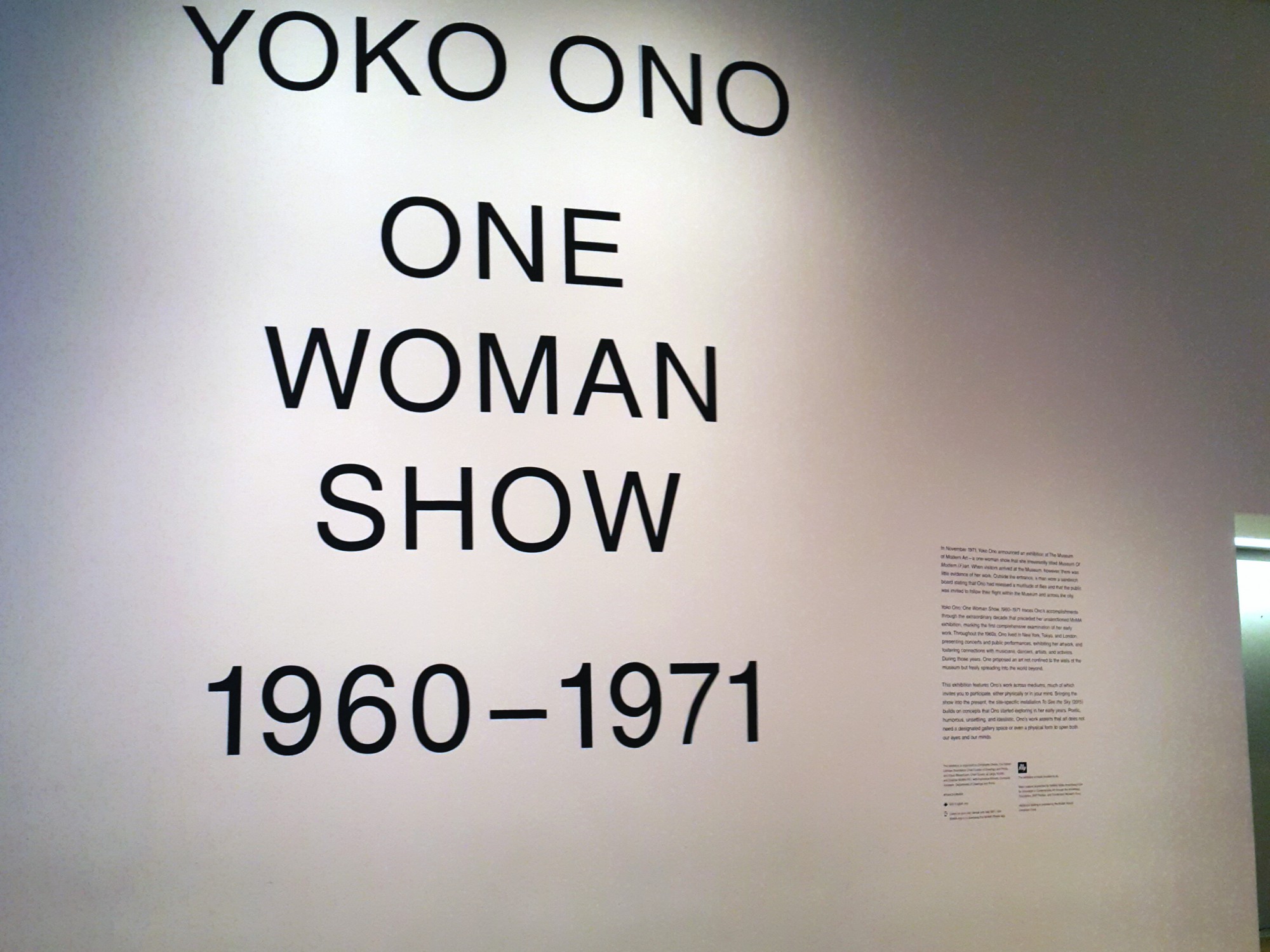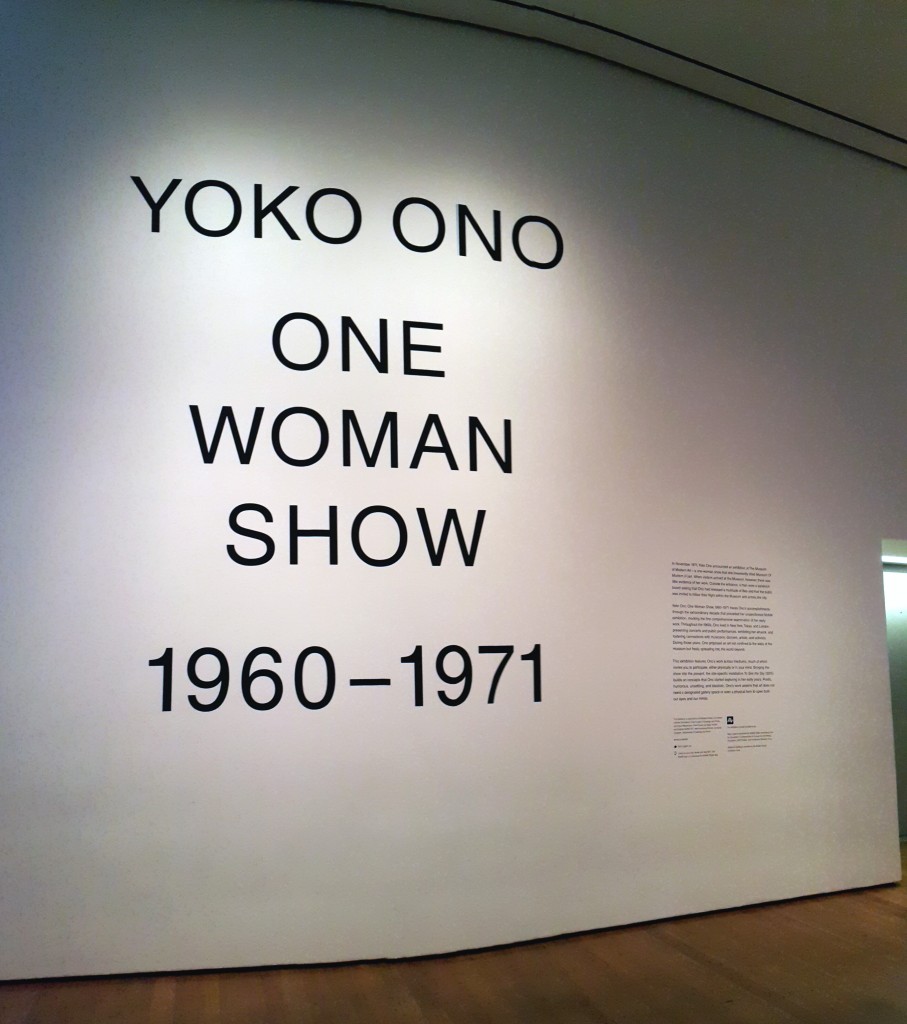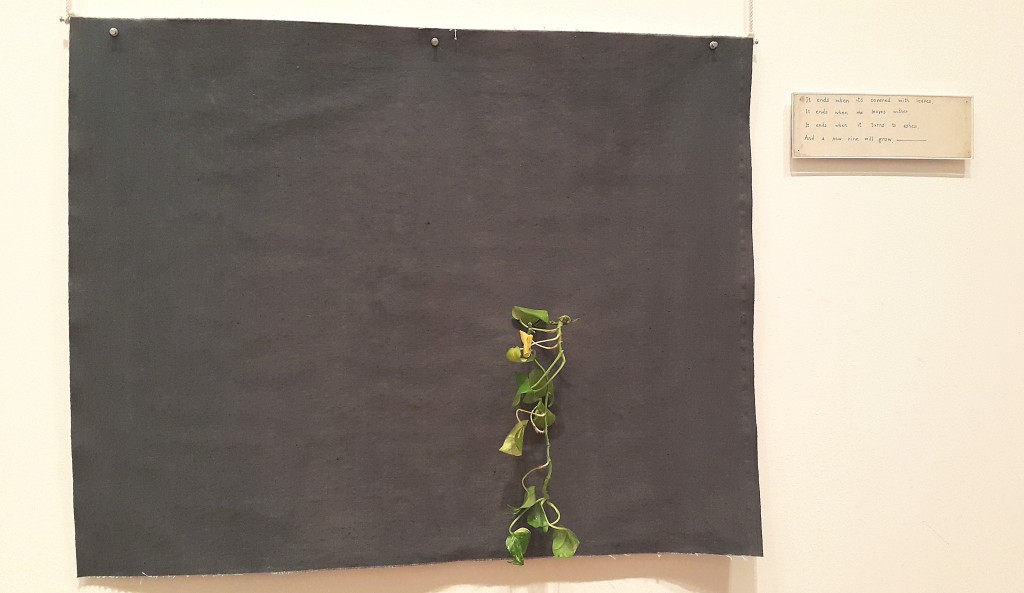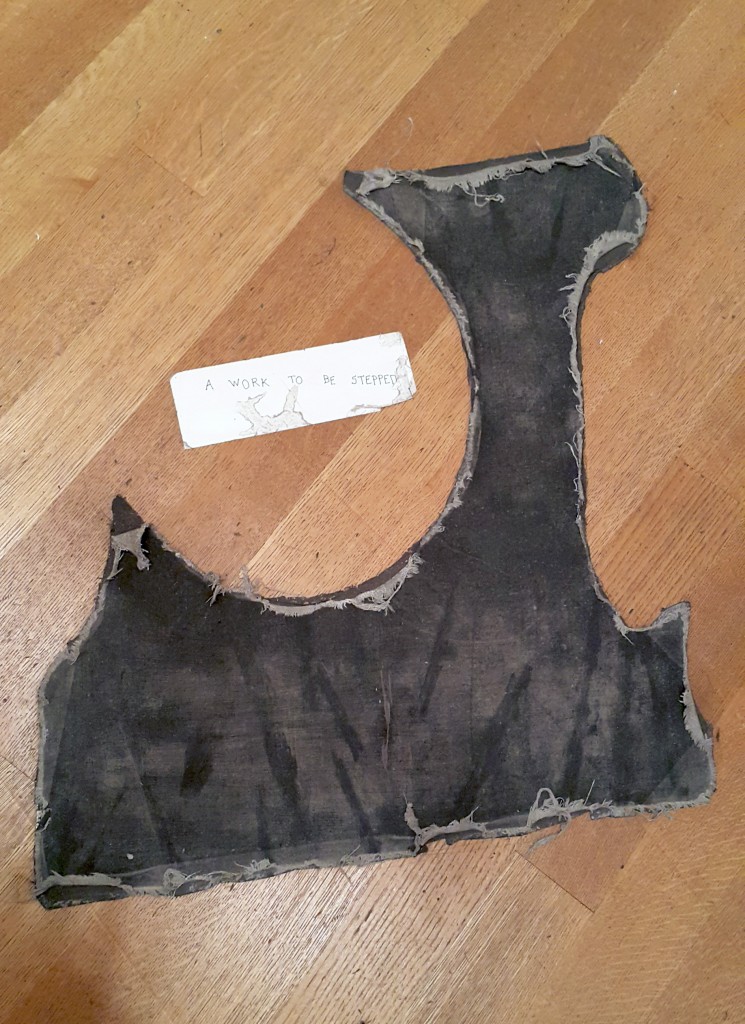I found Yoko Ono’s ways of presentation impress me a lot, many of her works in this exhibition are presented through time, and there are varies of unusual mediums were used in her works, and there are a few of her works are built with viewers’ interactions.
Here are some works in the exhibition that I was impressed.
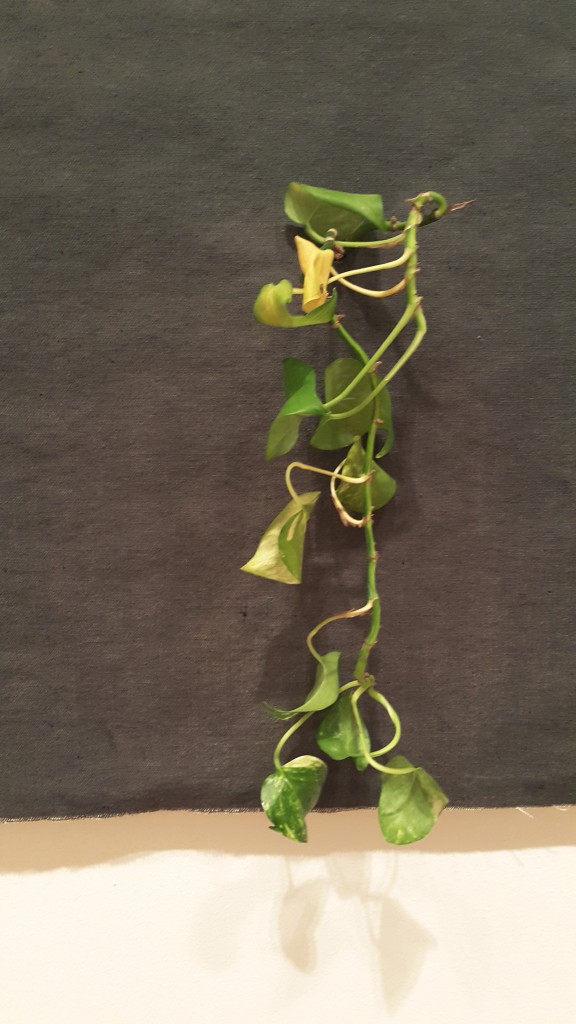
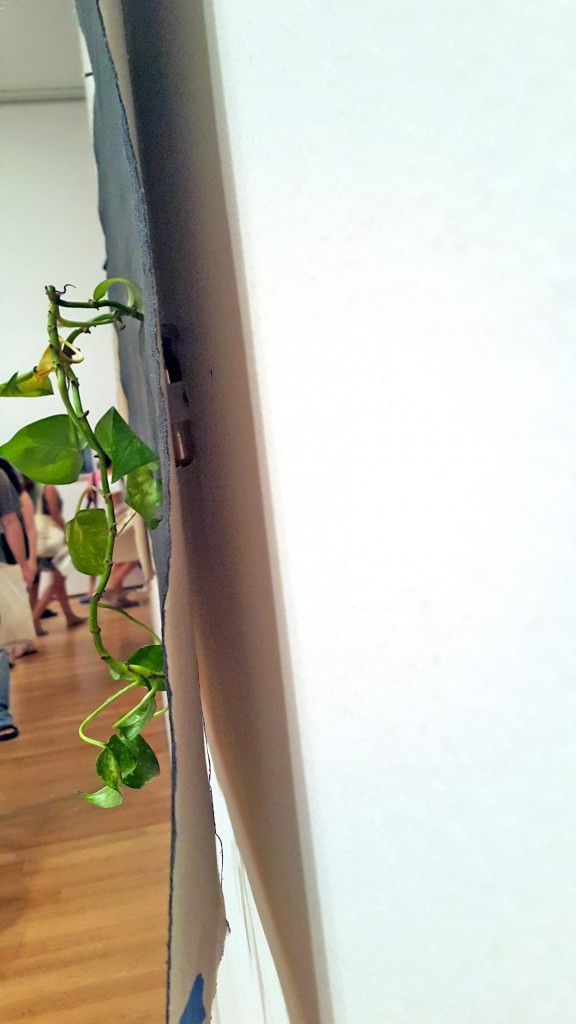
Painting in Three Stanzas, 1961/2015
The medium of this work attracted me, real living vine was used as medium in the work. I think the organic material and the note beside the canvas, which wrote,
“It ends when its covered with leaves.
It ends when the leaves wither.
It ends when it turns to ashes.
And a new vine will grow,_______ ”
the vine and the canvas present the progress of life , and allow visitors to see the actual cycle of growth, death, and rebirth happening in this piece from seeing the changes of the vine.
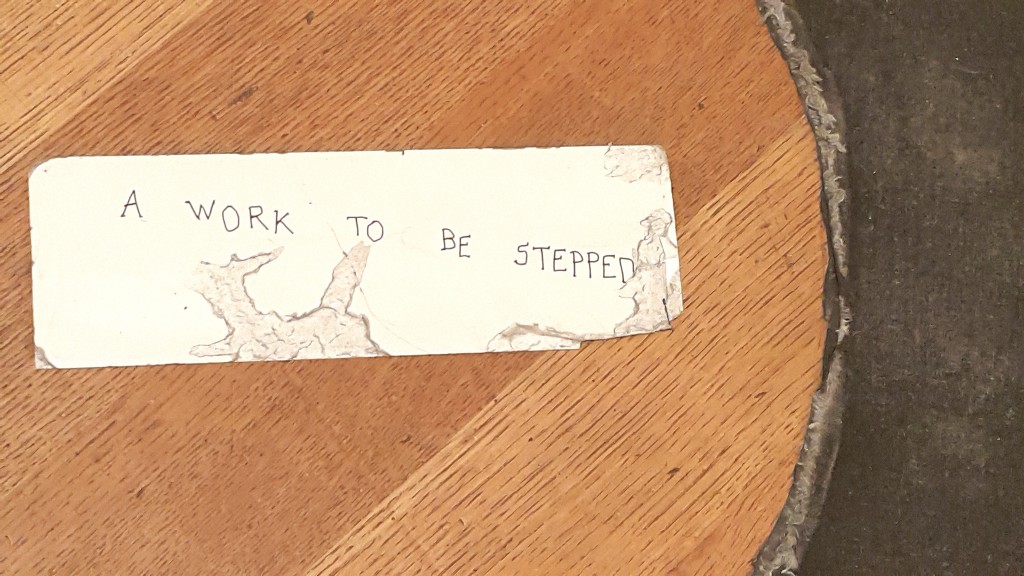
Painting to Be Stepped On, 1961/2015
There is an instruction notes inviting visitors to step on the painting. I find the requested interaction is really rare, which seems violate the respect we normally see traditional art works, but also presented a new way for visitors to experience arts.
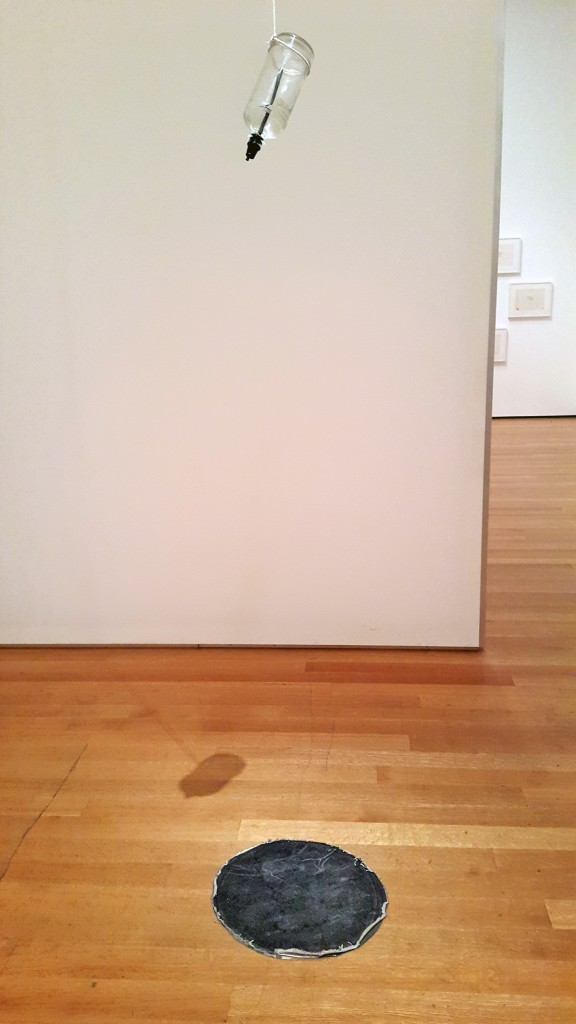
Waterdrop Painting (Version 1), 1961/2015
The presentation of this piece plays an important role in this work. I think the work isn’t just the canvas and the bottle only, it also include the space itself, co-operating with precise lighting .
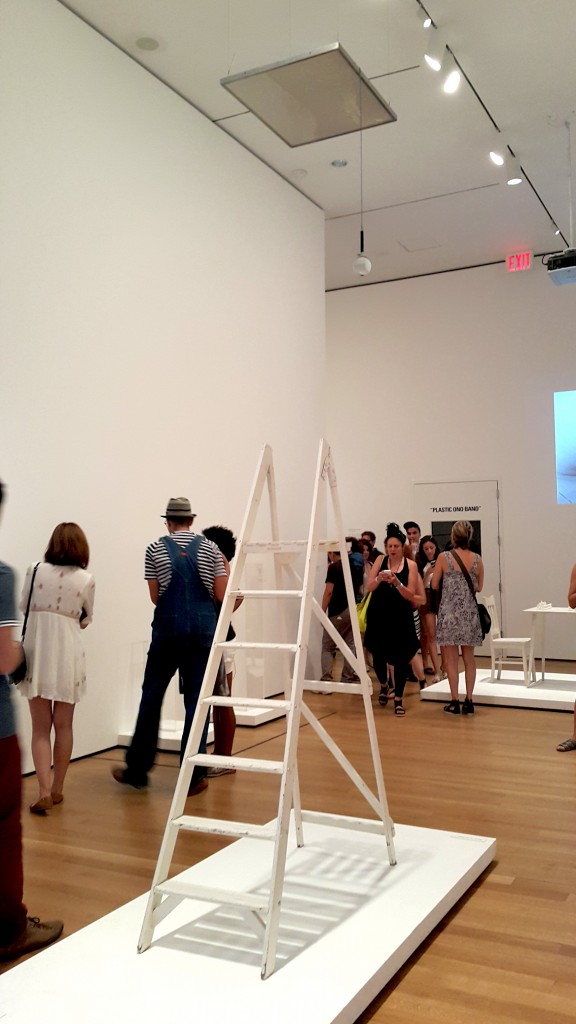
Ceiling Painting, 1966
This work is named “Ceiling Painting”, however, the work isn’t the painting hang on the ceiling, it is the whole installation itself. I find it interesting that the work does not allow visitors to touch, as I would want to climb up the ladder as I was so curious to look at the painting hanging on the ceiling. Maybe this is the reaction that Ono’s was expecting visitors to have while seeing this work.
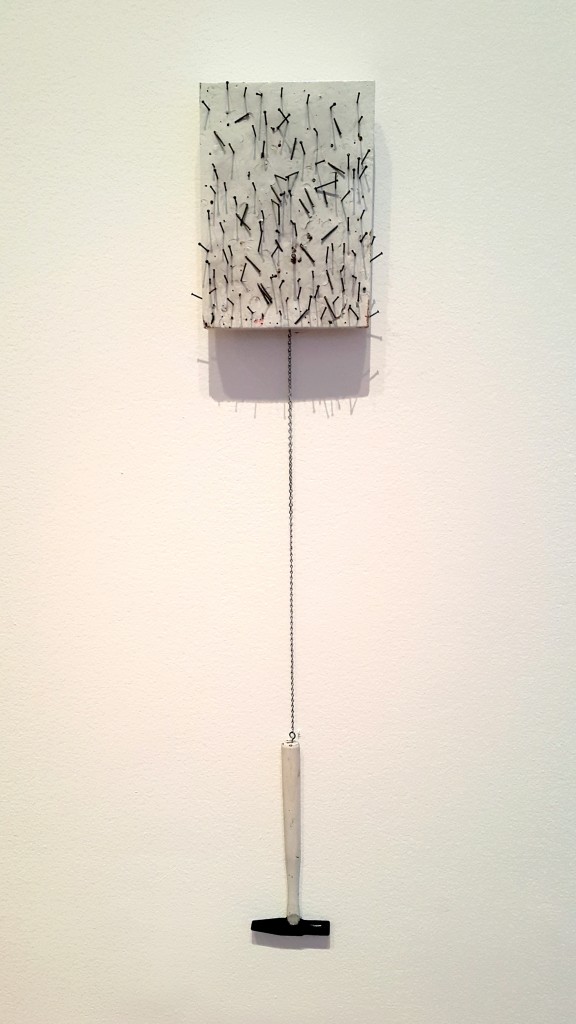
Painting to Hammer a Nail, 1961/1966
Since there is a hammer hanged under the painting, at the first sight I though it is also a piece built with visitors’ interactions. However, I saw there is a “do not touch” label beside the work, which made me focus more while looking at the work.
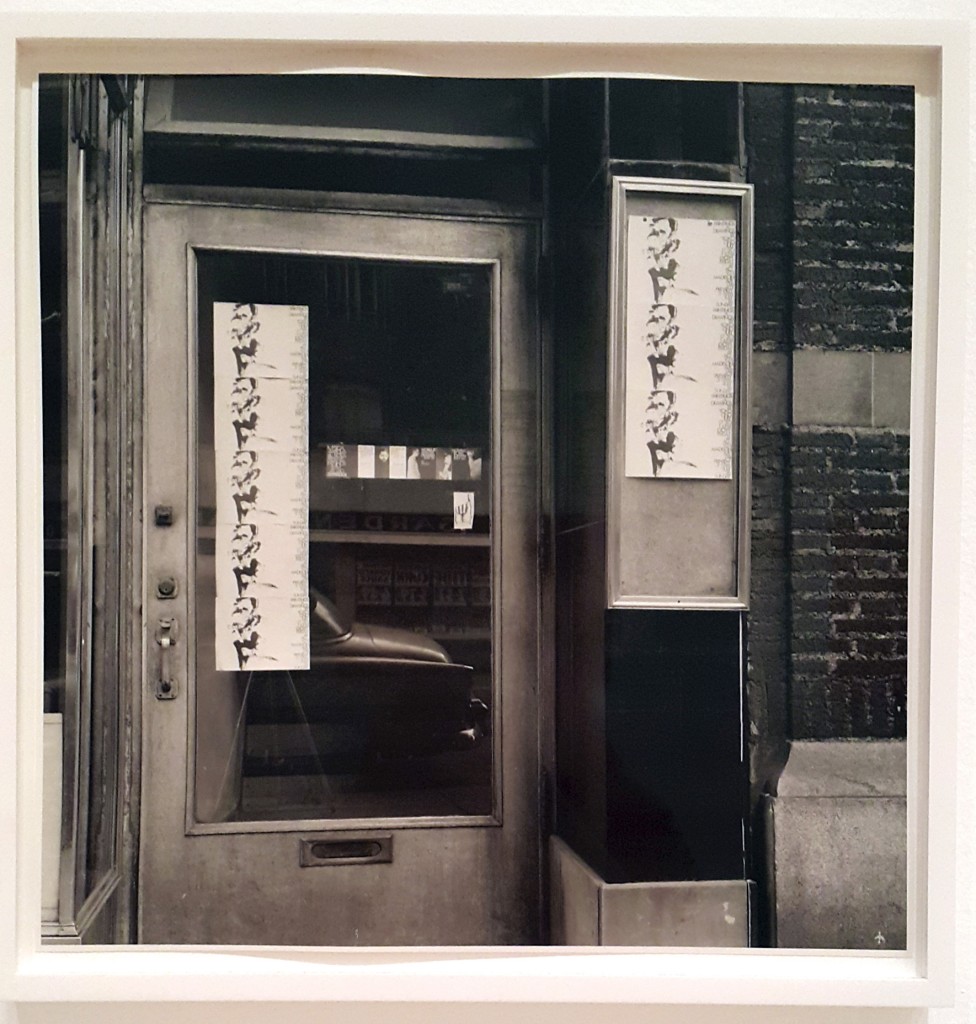

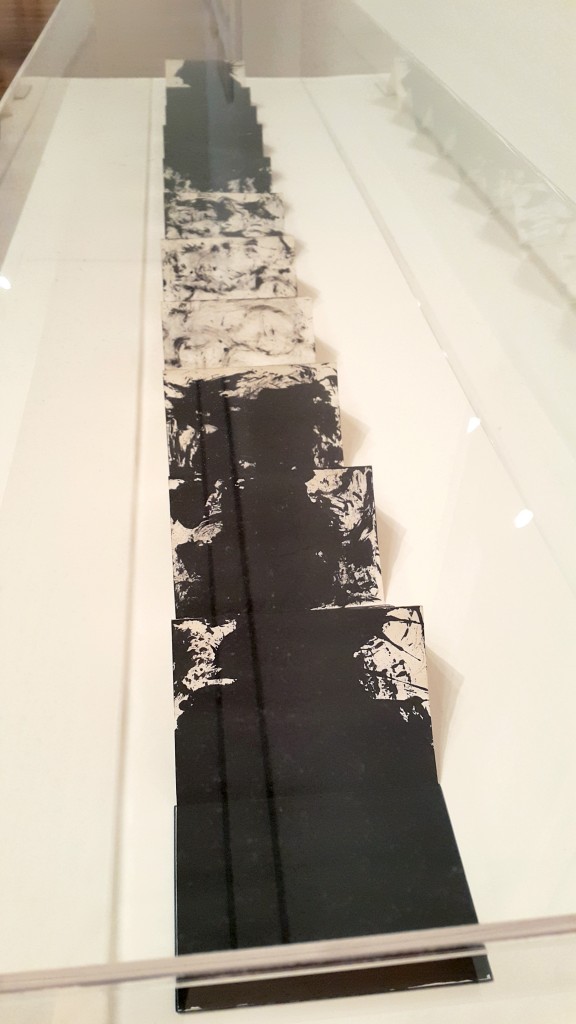
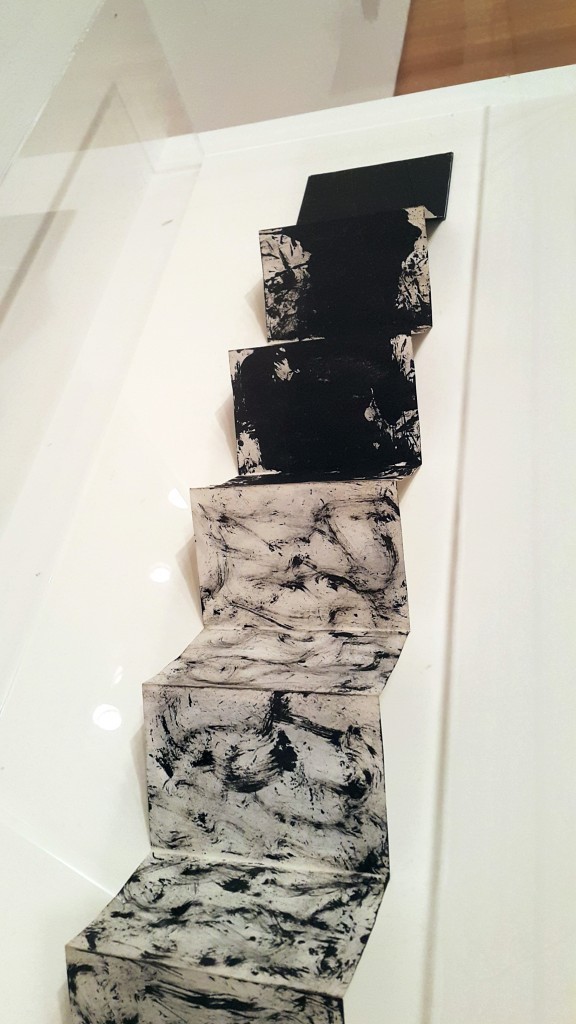
Painting Until It Becomes Marble, 1961
This is one of Ono’s few “instruction paintings”, visitors were asked to paint black ink over the pages. The work kept transforming from blank pages until it is filled with traces of marks that visitors left. I think these works that were built with visitors’ interactions often were surprisingly ended up beautifully, due to the tacit aesthetic understanding among visitors, we would usually interact with the existed marks left previously in order to build the work better .
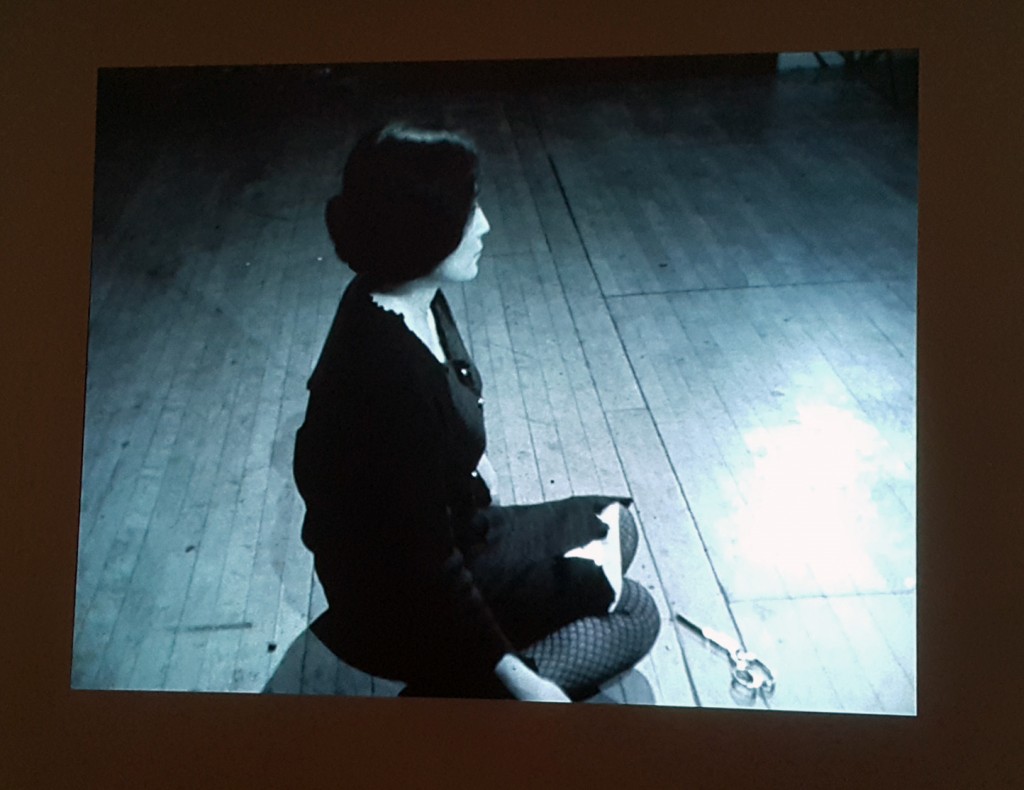
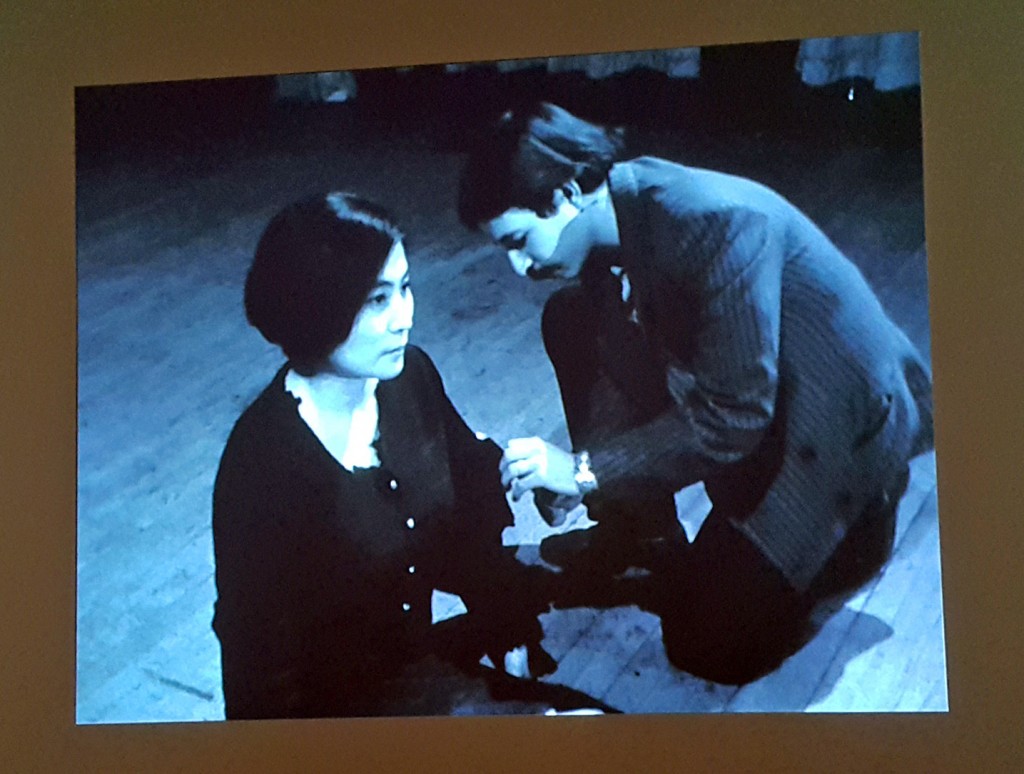
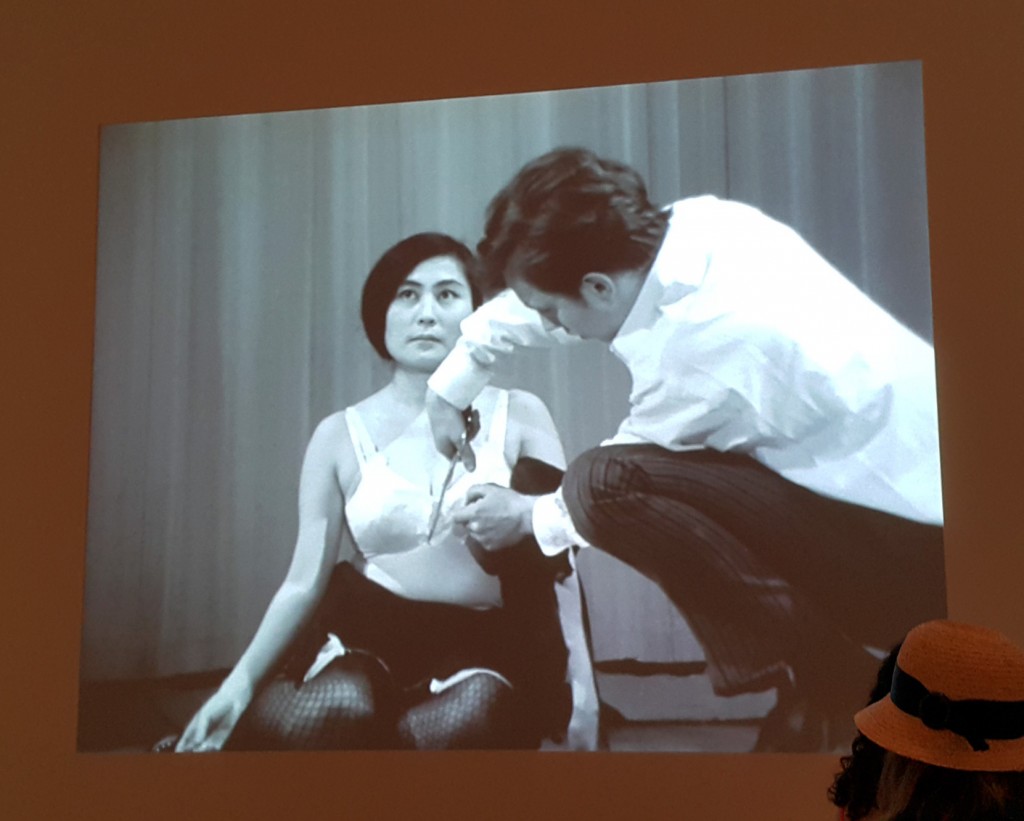
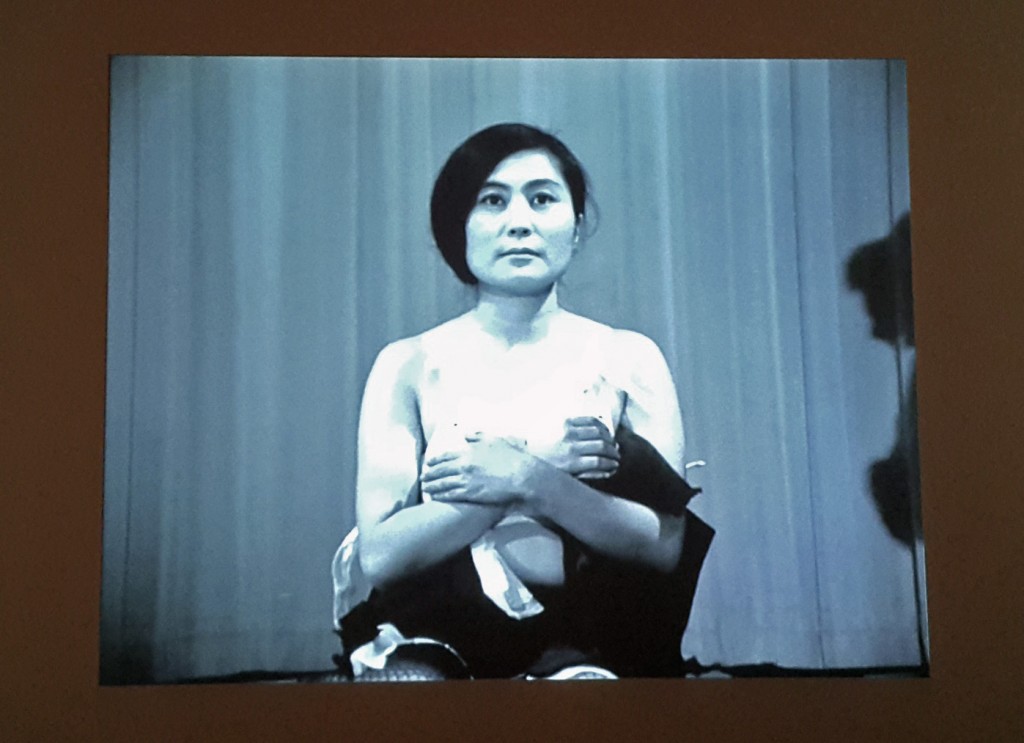
Cut Piece, 1964
This is a video recording Ono herself knelt silently on stage, invited visitors cutting off her clothing. I think the reactions of the participants fascinate me most, each participant has different decision made while cutting off her clothing, like, cutting off which part of Ono’s clothing, revealing how much of Ono’s body, or the way/ speed while cutting off her clothing.
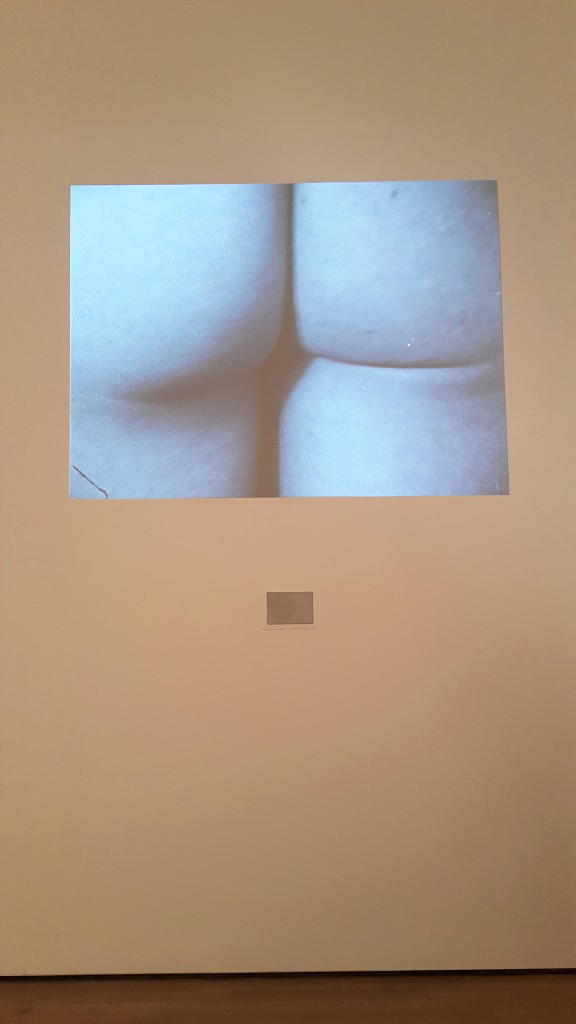
Film No.4, 1966-67
This is a media art work, recording different people’s walking butt. While watching the video, I realise there are no specialising on participants’ gender, which rise a sexless message due to a gender inequality protest was happening in Vietnam while the video was filmed .
Umi.L(@umi_lpm)張貼的影片 於 張貼
Bag Piece, 1964
(*Above is a video*) This is a live performance performed by visitors, visitors are invited to get inside the bag, and they can perform the work as they want. I find the way the work was created and presented with visitors’ interactions had create a chance for visitors to experience the work in person.
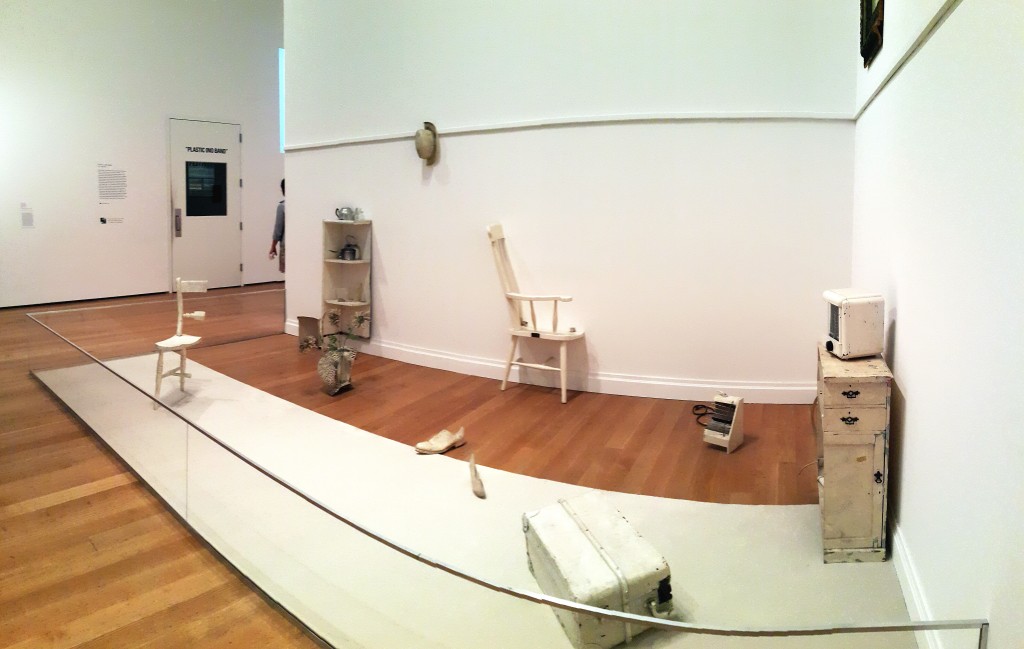
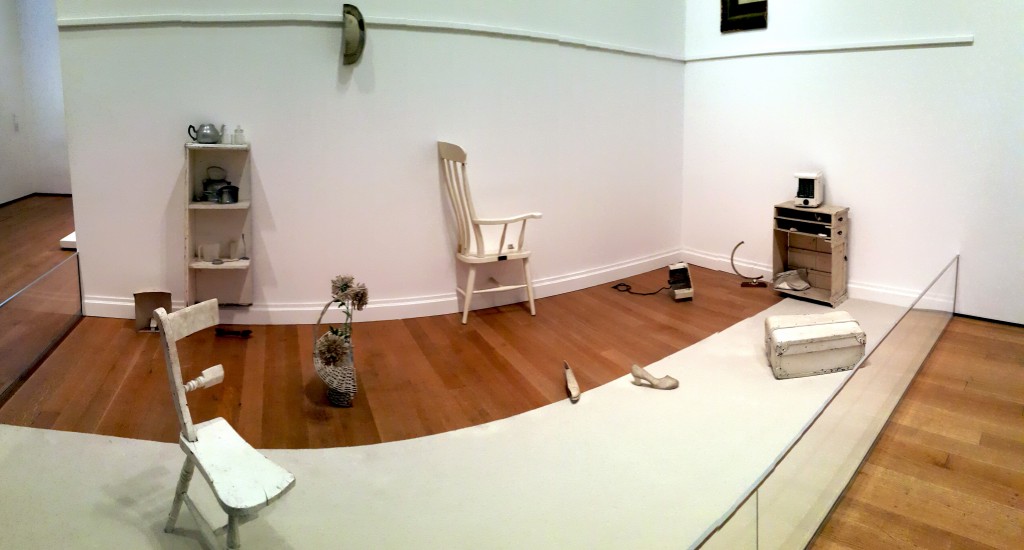 Half-A-Room, 1967
Half-A-Room, 1967
This is an installation art work, which is a room filled with half dissected furnitures. I find the incompleteness of the room, and even the room was half filled, I still find emptiness in the work. I think the objects were painted all white did help to create emptiness in the space, and the loose arrangement of the objects also created the incompleteness in the piece.

